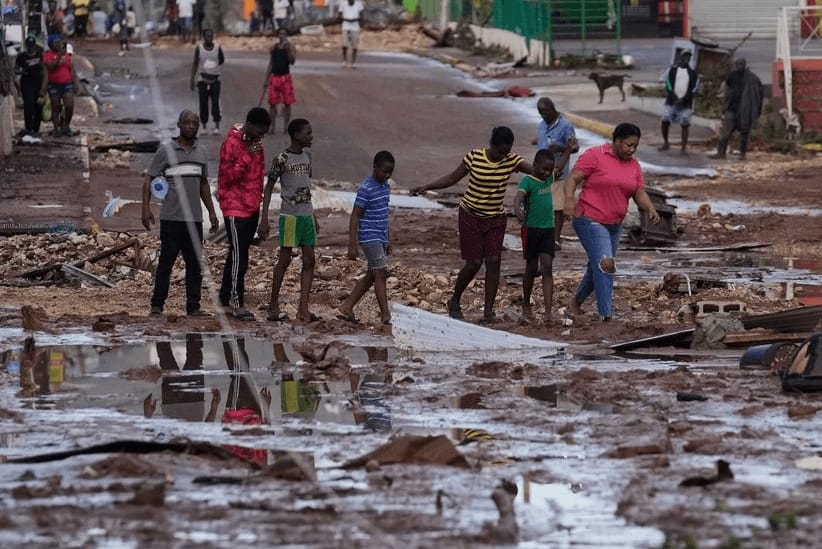- Conservative Fix
- Posts
- Hurricane Melissa Devastates Jamaica and Slams Cuba With 120 MPH Winds
Hurricane Melissa Devastates Jamaica and Slams Cuba With 120 MPH Winds
Strongest hurricane in Jamaica’s history causes mass evacuations, catastrophic damage, and threatens a fragile Cuba already in crisis.

Hurricane Melissa, now one of the most powerful storms ever recorded in the Caribbean, left a trail of destruction in Jamaica before making landfall in eastern Cuba early Wednesday morning threatening to plunge the already struggling island deeper into crisis.
With sustained winds reaching 120 mph, the storm battered Cuba’s southern coastline near Guama, west of the densely populated city of Santiago de Cuba. According to the U.S. National Hurricane Center, the region is now experiencing “life-threatening storm surge, flash flooding and landslides.”
More than 735,000 people were evacuated across eastern Cuba ahead of the storm, which comes as the island nation battles severe shortages of food, electricity, fuel, and medicine the result of years of mismanagement and communist central planning.
Cuban President Miguel Diaz-Canel warned residents on Tuesday to expect “significant damage,” urging citizens to comply with evacuation orders. In Santiago and Guantanamo, officials reported flooding across lowland areas, and nearly 35% of the population was moved out of harm’s way.
Despite this, much of Cuba's crumbling infrastructure offers little resistance to a storm of this magnitude. Roads have been washed out, power has been shut down in the east, and videos circulating on Cuban social media show torrents of rainwater surging through dark, powerless towns nestled along the Sierra Maestra mountains.
Just hours before Cuba, Jamaica took the full brunt of Hurricane Melissa’s Category 5 strength as the storm roared ashore near the town of New Hope with winds reaching 185 mph far surpassing the 157 mph threshold for a Category 5 hurricane.
Jamaican Prime Minister Andrew Holness described St. Elizabeth Parish as “underwater”, and noted widespread damage to hospitals, homes, businesses, and roadways. More than 500,000 people were left without power, and video from Montego Bay’s airport showed shattered glass, flooded waiting areas, and collapsed ceilings.
“Our country has been ravaged by Hurricane Melissa,” Holness said. “But we will rebuild, and we will do so even better than before.”
While officials have not yet confirmed the full death toll, Holness acknowledged that “some loss of life” is expected given the strength of the storm. Early reports indicated at least three deaths during storm preparations and a disaster coordinator hospitalized after suffering a stroke.
Melissa is now ranked the third most intense hurricane ever recorded in the Caribbean, behind only Wilma (2005) and Gilbert (1988) the latter being the last major storm to directly strike Jamaica.
The storm continues its march northeast. In the Bahamas, mandatory evacuations were ordered for southern islands expected to lie in Melissa’s path. Meanwhile, Haiti and the Dominican Republic have already endured days of torrential rain, with at least four deaths reported due to flooding and mudslides.
For Cuba, Melissa could not have come at a worse time. Already experiencing its worst economic and energy crisis in decades, the communist-run island lacks the resources for a rapid recovery. While President Diaz-Canel promised to deploy 2,500 electric line workers after the storm passes, the island’s fragile grid and broken supply chains will likely delay meaningful relief for weeks if not longer.
Hurricane Melissa may have spared Havana, but for millions across the Caribbean, the damage is already done and the road to recovery will be long and grueling.
Share this story to keep attention on the people hardest hit by Hurricane Melissa and subscribe to our newsletter for real-time updates on disaster response, international aid, and recovery efforts.